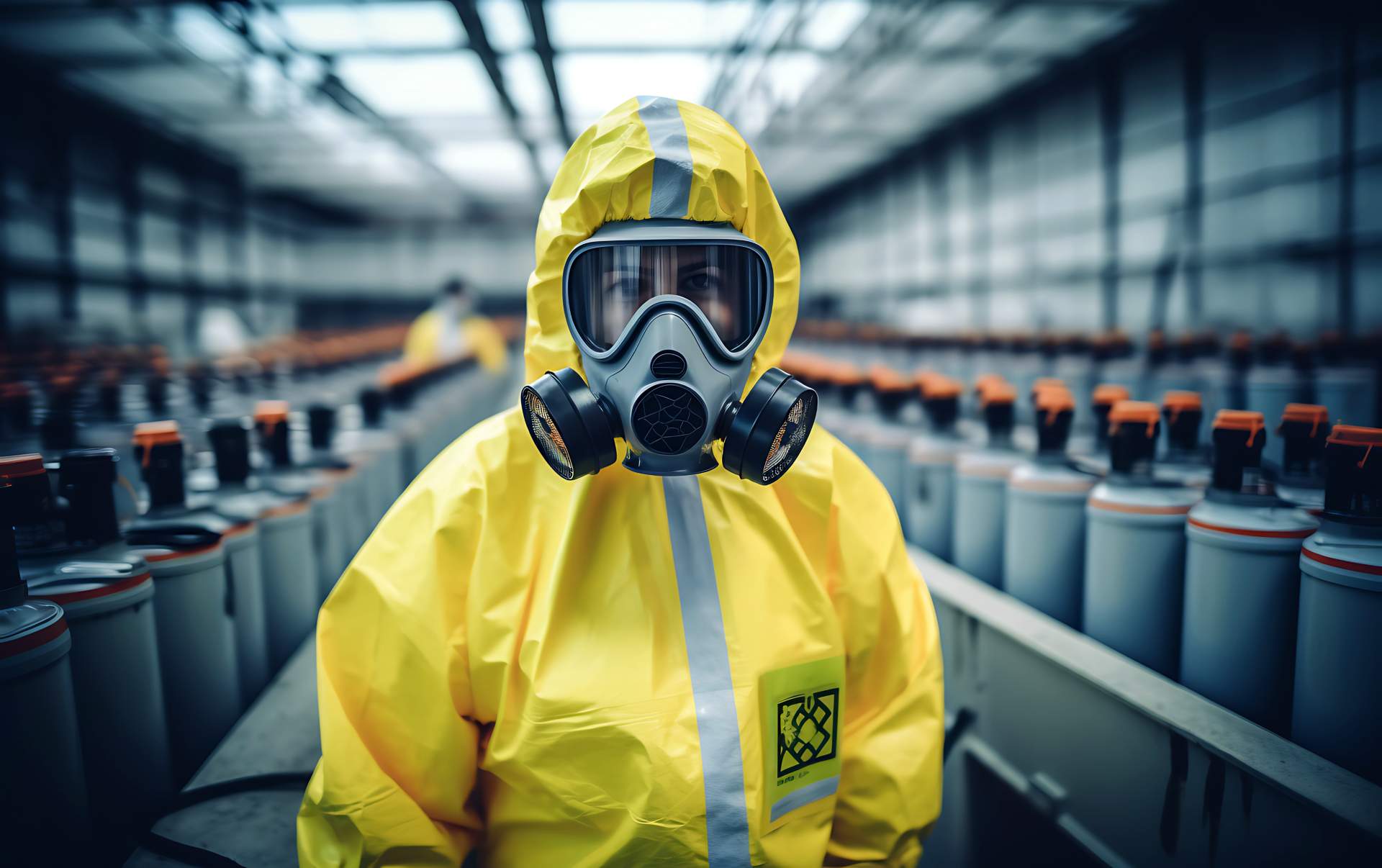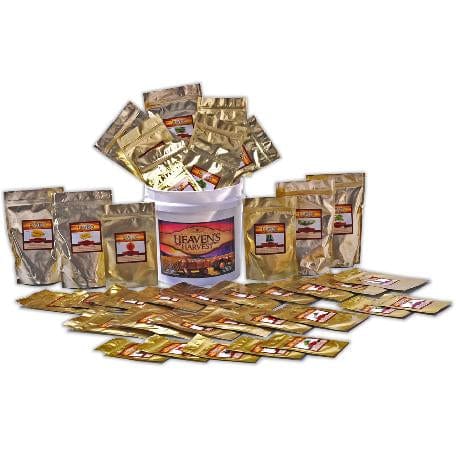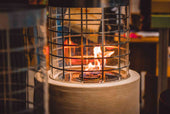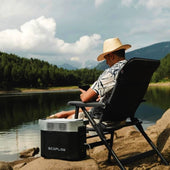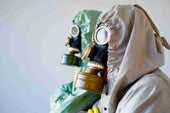Personal protection is crucial when handling hazardous materials. Without HAZMAT suits, you cannot be protected from chemicals, biological agents, radioactive materials, and the like.
But not all HAZMAT suits are created equal. Their protective levels differ and are tailored to the specific threat and situation.
This article discusses HAZMAT suits, their levels, appearance, and uses. According to the NIOSH (National Institute for Occupational Safety and Health) website, while this information may be basic to some, it is essential to know that three levels of protection are available for those who work or play with industrial hazards.
The Basics of HAZMAT Protection
The HAZMAT suits are designed to protect people wearing them from damage and hazards. Before fully appreciating the protection levels, we need to understand how they function overall, their design, and their intended purpose.

Definition and Purpose:
The HAZMAT (Hazardous Materials) suit is a full-body protective garment that shields an individual from direct contact with toxic substances, whether chemical, biological, radiological, or nuclear.
Key Features:
-
Sealed Construction: Prevent the ingress of gases, liquids, and particles.
-
Integrated Systems: It also contains boots, gloves, and respiratory devices.
-
Material Composition: Hazardous agents do not penetrate materials like Tyvek, butyl rubber, and advanced polymers.
Who Needs Hazmat Suits?
Hazmat suits are crucial in various fields, including:
-
Chemical Industry: To get rid of toxic substances.
-
Medical Sector: Second, protecting against infectious diseases.
-
Military Operations: Defense against CBRN threats.
-
Disaster Response: Cleanup or containment of hazardous spill.
First responders, lab technicians, and hazardous waste cleanup crews all wear hazmat suits, which is the priority and main role of the entire science emergency network.
What Determines the Levels of Hazmat Protection?
Hazmat suit levels depend on the kind of hazard and the severity of the hazards present in an area.
Guidelines on the protection level required for various hazards can be found in sources such as OSHA (Occupational Safety and Health Administration), EPA (Environmental Protection Agency), and NFPA (National Fire Protection Association).

Key Determining Factors:
-
Type of Hazard:
- Chemical: To corrosive, toxic, or flammable chemicals.
- Biological: Protects against viruses, bacteria, or biohazards.
- Radiological: It prevents radiation or radioactive particles.
- Nuclear: Protection from nuclear fallout or threat related to nuclear fallout.
-
Exposure Intensity and Duration:
It depends on the concentration of the hazard and the duration of exposure.
For instance, if there is a high concentration of airborne toxins, one must wear Level A suits with gas-tight seals; however, if exposure to nonlethal chemicals is low, Level C protection can be applied.
3. Work Environment:
Hence, environments with unpredictable hazards, such as emergency response zones, require high protection.
Known risks found in laboratories and similar industrial sites often involve controlled settings for which a custom approach may be feasible for selection.
Overview of the Levels
The first category has four levels: A, B, C, and D. These levels provide different levels of protection as they decrease risk. This enables the task to be classified according to its nature and the severity of the hazard involved, enabling the right suit to be chosen.
-
Level A provides maximum protection, including a gas-tight suit and SCBA, suitable for the most severe, unknown, or highly toxic environments.
-
Level B: Combines high respiratory protection with moderate skin protection, where inhalation hazards are major but fewer skin contact hazards.
-
Level C: Air purifying respirator (APR) and chemical-resistant clothing for use in environments where air quality is adequate to protect from known risks.
-
Level D is designed for minimal-risk tasks, with basic coveralls or workwear in a general low-hazard environment.
This provides a good classification system for workers and provides them (the workers) with equipment that is very suitable for their hazards while maintaining safety and practicality. These levels also enable organizations and individuals to make informed decisions that protect health and safety in various settings.
The Four Levels of HAZMAT Suits
HAZMAT suit levels range from A to D, based on the exposure risk level. These levels ensure maximum containment and minimal protection, striking a balance between safety and functionality.
Level A: Maximum Protection for Extreme Hazards
- Fully Encapsulated: The entire body is covered with a built-in SCBA (Self-Contained Breathing Apparatus).
- Chemical and Gas Resistance: The sealed seams prevent the penetration of gases and highly toxic substances.
- Heat and Tear Resistance: Durable materials withstand environmental stress.
- Working with, handling, or storing highly toxic or corrosive chemicals.
- In situations where a chemical or biological hazard exists, without known chemical or biological hazards.
- For example, responding to emergency releases of industrial chemicals or terrorist releases of chemical agents.
- Real-Life Use Case: In 1984, responders to the Bhopal gas tragedy wore Level A suits to help control their exposure to methyl isocyanate.
Level B: Increased Mobility while maintaining High Protection
- Partial Encapsulation: The SCBA covers the body but gives greater freedom of movement.
- Splash Protection: Effective against liquid chemicals but not as resistant against vaporized toxins.
- Durability: Although the suits are lighter, they are as strong as ever in terms of resistance to liquids.
- Decontamination tasks.
- Hazardous chemicals are involved in waste disposal.
- Emergency chemical spills.
- Level A suits are harder to wear and maneuver in than that.
- Longer lasting in less toxic environments.
Level C: Moderate Protection for Known Contaminants
- Air-Purifying Respirators (APRs): They protect against known airborne hazards.
- Chemical-Resistant Fabrics: They block moderate exposure to chemicals and particulates.
- Ease of Use: Designed for non-critical scenarios, this is a lightweight solution.
- Infectious outbreaks (such as Ebola and COVID-19) and how healthcare responds to them.
- This involves routine maintenance in facilities where hazardous but manageable substances are used.
Limitations:
- Not suitable for high-risk or unknown toxic environments.
- Little or no protection from airborne gas or vapor hazards.
Level D: Basic Protection for Low-Risk Environments
- Standard Workwear: Basic coveralls and gloves included.
- No Respiratory Protection: Only for surface-level hazards.
- Breathable and comfortable, perfect for long wear in non-toxic environments.
-
For industrial or clean environments, general maintenance is required.
-
Without chemical hazards in construction or laboratory settings.
Choosing the Right Level of Protection

It is crucial to select the most suitable hazmat suit for the specific task at hand. This ensures extra safety without limiting movement.
Hazardous material suits are not universal garments; one has to always select the right gear based on the type of hazard, the level of risk it presents, and the setting in which one operates.
Constant awareness of hazards affecting the organization, along with proper observance of safety guidelines, can help minimize the risks associated with handling hazardous products.
Conducting a Hazard Assessment
A comprehensive hazard evaluation decides the range of hazmat protection levels required. This process includes assessing the probabilities involved and checking all factors before deciding on the PPE.
-
Identify Hazards:
2. Evaluate Intensity and Likelihood of Exposure:
3. Consult Material Safety Data Sheets (MSDS):
4. Assess Environmental Conditions:
Matching Protection to Hazards
When selecting the most suitable hazmat suit, it is essential to strike a balance between protection, the individual's mobility, and the suit's usability. Protection is in question. Here are the key considerations:
-
Safety vs. Mobility:
-
Higher-level suits (e.g., Level A) reduce mobility and visibility because they provide a completely sealed environment, which can compromise visibility.
-
Lower-level suits may be effective on jobs that require mobility or delicate coordination, provided the dangers are relatively small.
-
-
Proper Fit:
-
They are also easily fitted; a suit that is badly fitted compromises protection and is physically uncomfortable.
-
Ensure you have suits in various sizes so everyone is properly dressed.
-
-
Training:
-
Specifically, suit-use training involves correctly donning and doffing the suit and responding to emergencies if the worker is suited.
-
Other major training that should be provided includes understanding the coverage of each suit level.
-
Regulations and Guidelines
Legal conformity checks that the PPE complies with legal requirements and is thus serviced by functional standards. The following guidelines are critical:
-
OSHA Standards:
OSHA establishes specific requirements for PPE based on the hazards present in the workplace. It obligates employers to assess potential hazards and provide appropriate equipment.
-
EPA Guidelines:
EPA guidelines apply to environmental cleanup and hazardous waste operations and management activities, laying down protection requirements depending on the nature of the hazardous materials.
-
NFPA Recommendations:
While many guidelines are general, the NFPA has specific recommendations regarding the performance, selection, and use of protective clothing, particularly for emergency responders.
-
Industry-Specific Requirements:
It can be postulated that a given industry will implement specific safety measures depending on the nature of the work performed. For example, one organization or structure may consider a particulate or pathogen its primary threat, while another would regard a particular chemical as a threat.
Proper Use and Maintenance of Hazmat Suits
However, Hazmat suits are only effective when used properly, maintained properly, and stored and used properly in an environment where they are stored and used properly.
These suits work as designed only if proper training, routine inspections, and decontamination protocols are followed.
However, failure to take these steps can compromise the suit's protective capabilities and place wearers at high risk.

Training and Certification
- Proper Donning and Doffing Techniques: Wearing or removing a hazmat suit incorrectly can expose you to contamination, especially in areas with hazardous materials. Training ensures personnel take the necessary precautions to avoid risks.
- Hazard Recognition: Personnel must understand the level of protection required to safeguard them against their specific hazards and utilize the appropriate protective gear for the task.
- Emergency Response Preparedness: Quick, correct actions can save lives in high-stakes situations. Training teaches workers how to respond in the event of a chemical leak or biological spill, enabling them to act more confidently in emergencies.
- Certification Requirements: Workers in many industries are required to obtain PPE certification to comply with OSHA and associated regulatory standards.
Inspection and Maintenance
- Visual Inspections:
- Seal Testing:
- Cleaning and Storage:
Decontamination Procedures
- Following Established Protocols:
Common Misconceptions About Hazmat Suits
Although vital for safety, hazmat suits are often not understood. If not used properly, they can result in dangerous situations.
Understanding these misconceptions can help individuals and organizations make better decisions about their protective equipment and may help prevent unnecessary exposure.
Misunderstanding the Levels
However, one of the most common misconceptions is that many people fail to differentiate between the protection levels of hazmat suits. This can result in either overuse or underuse of resources:
-
Overprotection: Wearing a Level A suit when its use isn’t necessary to succeed (when a Level B or C suit would be appropriate) wastes valuable resources and usually decreases efficiency. Tasks commonly require higher-level suits, which limit mobility, visibility, and comfort when a lower class of suit is sufficient.
-
Underprotection: To put it starkly, choosing a lower-level suit in a hazardous environment because it is 'good enough' can lead to severe exposure. For instance, workers are at grave risk when using Level C suits in conditions involving highly toxic airborne gases.
Therefore, it is essential to understand the situation's requirements and match them to the appropriate level of hazmat suit.
Durability vs. Single-Use
Another common misconception is that hazmat suits can be easily reused. Not all hazmat suits are designed for multiple uses:
-
Single-Use Suits: These suits are designed for one-time use and must be disposed of according to protocol after each use. Single-use suits can only be used once. However, this compromises their integrity, putting wearers at risk or ruining suits they might not reuse again.
-
Durable, Reusable Suits: The higher-level suits are designed for reuse, especially those used in industrial or emergency response roles. However, these suits must be decontaminated and maintained rigorously so that they become almost useless.
Knowing whether a suit is intended for single or multiple uses and complying with the manufacturer’s recommendations for care and disposal ensures the highest possible safety and reduces costs and risks.
Why Families Should Consider HAZMAT Suits
As the world becomes increasingly unpredictable, HAZMAT suits are now as much a part of family preparedness as they are in specialized professions.
Whether natural or man-made disasters occur, these suits provide life-saving protection in an emergency.
✔️Versatile Protection
✔️ Sizing for All Family Members – Inclusive
✔️ Practical Preparedness
✔️ Affordable Peace of Mind
Conclusion

It is imperative to understand the levels of HAZMAT suits. The correct protective gear can save lives and must be present for everyone, from emergency responders to families preparing for disasters.
MIRA Safety HAZMAT Suit is a top pick for top-grade protection that’s reliable, versatile, and all-inclusive.
This Level C hazmat suit has a standard air-purifying respirator (PAPR). When worn with a self-contained breathing apparatus (SCBA) respiratory system, it is a Level B hazmat suit.
Learn how to apply knowledge and utilize high-quality gear to stay safe in hazardous situations.

